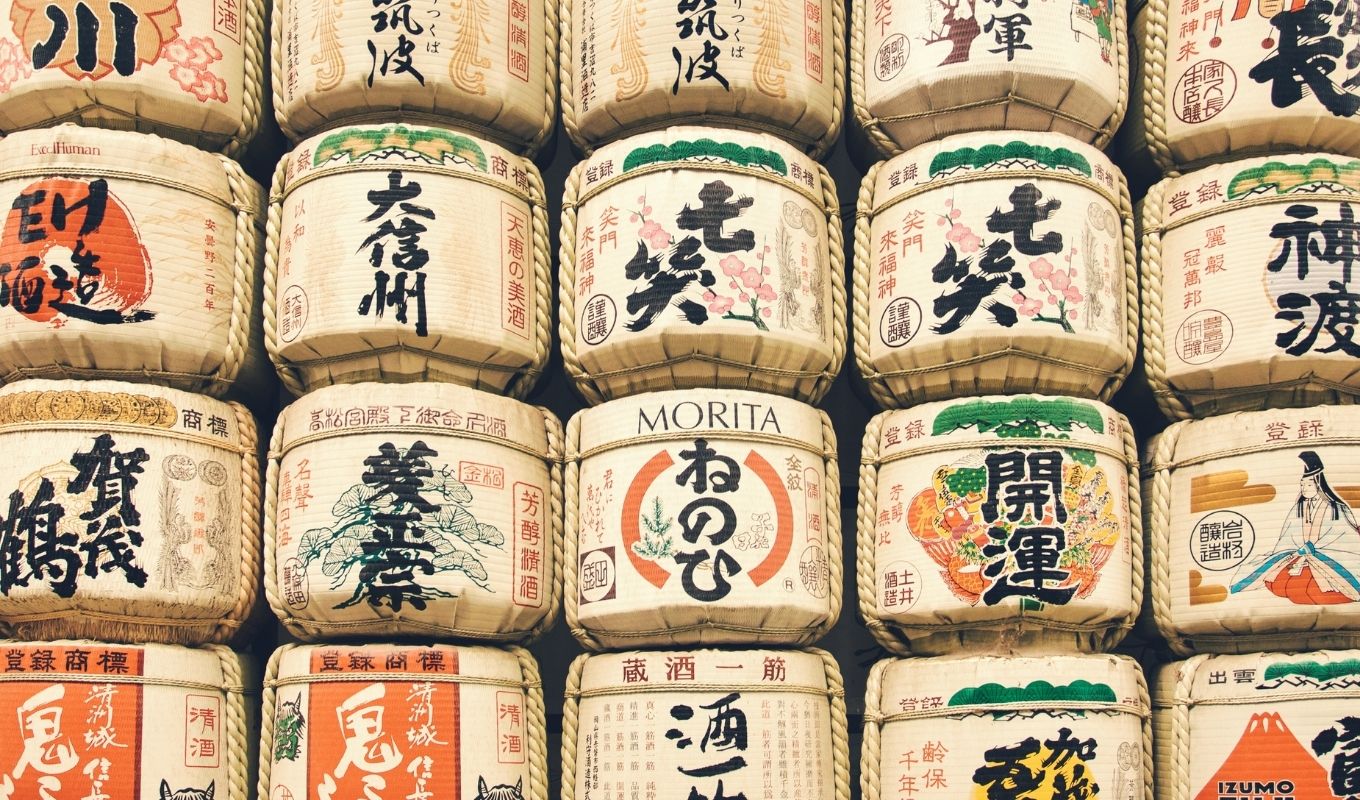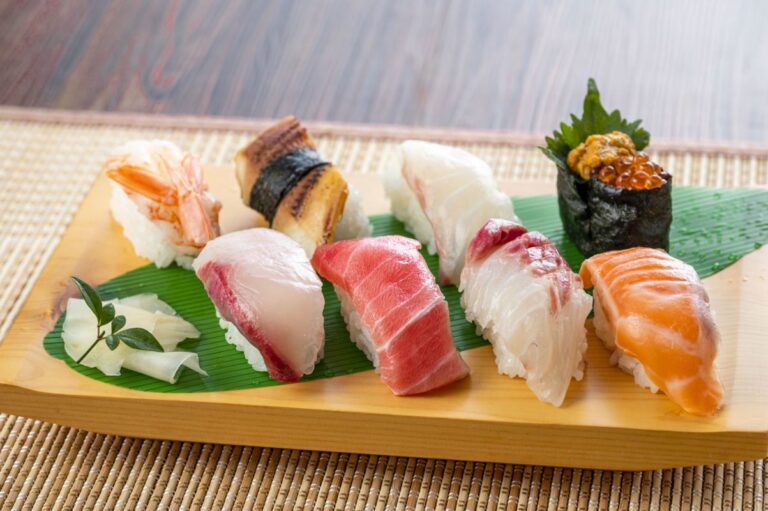Instead of holding onto the handle of a tall cold, glass mug, you take a sip of the nation’s favorite pastime alcoholic beverage from a small cylindrical ceramic cup that fits between your index finger and your thumb. After just a few sips, you’ve depleted the cup, so you pour another round from a spherical flask with a narrow neck. Each warm sip heats your body from head to toe… You’re more likely to drink this alcoholic beverage warm than cold!
Sake is Japan’s most famous alcoholic drink. Whereas the frothy beer enjoyed by many Americans is typically made of fermented barley, sake is made primarily of fermented rice. It is sometimes called “rice wine” in English, although it is closer to beer than to wine. To further complicate matters, the word for alcoholic beverages in general in Japanese is sake or o-sake! There are literally dozens of varieties of sake, which are sometimes also referred to as nihonshu or seishu. However, there are two primary types of sake that we’ll take a closer look at here.
History Of Sake
Sake is possibly thousands of years old. Although historians are unsure of when sake was first brewed, it is mentioned in historical documents as far back as the 3rd century CE. Rice has always been an essential crop to the Japanese people, and it is likely that Japanese farmers experimented with an indigenous form of alcohol-making by chewing their grains, spitting them into a pot, and waiting for the rice to ferment. (The salvia helped ferment the alcohol.)
By the 10th century CE, the sake-brewing process became more refined and involved using a mold called koji to ferment the rice in water, a mold which is still used in the brewing process today. In the 16th century, brewers began polishing the rice before brewing to remove fats and increase starch, although different varieties call for a different level of polishing. By the 19th century, over 30,000 sake breweries existed in Japan.
Today there are around 8000 sake breweries in Japan. Prior to World War II, all alcoholic content in sake was made entirely from fermented rice, but during the war, distilled alcohol made from other types of grain (barely, wheat, etc.) was added during the brewing process to make up for low productivity due to a rice shortage. The Japanese grew to like the taste and the way the additional alcohol complimented the aroma of the drink, so most types of sake are still brewed with added alcohol today.
Futsuu-shu: “Cheap” Sake
The most popular variety of sake sold is referred to as “cheap” or “ordinary” sake. It contains the most added alcohol in order to increase manufacturing yield. It is quite common for Japanese adults to enjoy a warm decanter of futsuu-shu every evening.
Tokutei meishou-shu: “Premium” Sake
The second type of sake, called “premium” or “special” sake, is a label given to higher quality sake traditionally reserved for special occasions or for the drinker with truly discerning tastes. There are quite a few varieties of sake that fall into this category, the most popular of which include:
- Junmai-shu: This “pure rice” sake has no added alcohol and traditionally is made of rice that has been polished to less than 70% of its initial weight. The junmai (“pure rice”) label can actually be applied to a number of other sake varieties as well (kinds that are otherwise usually brewed with added alcohol) when they have been brewed without added alcohol.
- Honjouzou-shu: Like with junmai-shu, the rice in this premium sake is typically polished down to 70% of its initial weight. However, honjouzou-shu has a small amount of added distilled alcohol (116 liters per 1000 kilograms of rice), which is used to accentuate the aroma of the sake. Due to American brewing laws, which make brewing this kind of alcohol illegal, any honjouzou-shu sold in America has actually been brewed in Japan.
- Ginjou-shu: Fermented at low temperatures, ginjou-shu is made from rice polished down to between 50-60% of its original weight. Dai ginjou-shu is made of rice polished down to 35-49% of its initial weight. The traditional variety is brewed with added distilled alcohol, but junmai (“pure rice”) varieties are popular, too.

